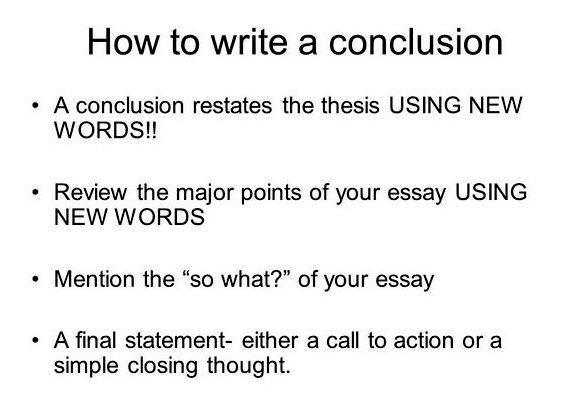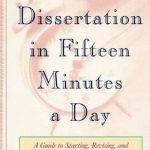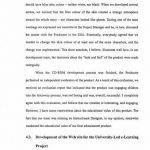This page is brought to you by the OWL at Purdue (https://owl.english.purdue.edu/). When printing this page, you must include the entire legal notice at bottom.
Tips and Examples for Writing Thesis Statements
This resource provides tips for creating a thesis statement and examples of different types of thesis statements.
Contributors: Elyssa Tardiff, Allen Brizee
Last Edited: 2014-02-10 10:44:43
Tips for Writing Your Thesis Statement
1. Determine what kind of paper you are writing:
- An analytical paper breaks down an issue or an idea into its component parts, evaluates the issue or idea, and presents this breakdown and evaluation to the audience.
- An expository (explanatory) paper explains something to the audience.
- An argumentative paper makes a claim about a topic and justifies this claim with specific evidence. The claim could be an opinion, a policy proposal, an evaluation, a cause-and-effect statement, or an interpretation. The goal of the argumentative paper is to convince the audience that the claim is true based on the evidence provided.
If you are writing a text that does not fall under these three categories (e.g. a narrative), a thesis statement somewhere in the first paragraph could still be helpful to your reader.
2. Your thesis statement should be specificit should cover only what you will discuss in your paper and should be supported with specific evidence.
3. The thesis statement usually appears at the end of the first paragraph of a paper.
4. Your topic may change as you write, so you may need to revise your thesis statement to reflect exactly what you have discussed in the paper.
Thesis Statement Examples
Example of an analytical thesis statement:
An analysis of the college admission process reveals one challenge facing counselors: accepting students with high test scores or students with strong extracurricular backgrounds.
The paper that follows should:
- Explain the analysis of the college admission process
- Explain the challenge facing admissions counselors
Example of an expository (explanatory) thesis statement:
The life of the typical college student is characterized by time spent studying, attending class, and socializing with peers.
The paper that follows should:
- Explain how students spend their time studying, attending class, and socializing with peers
Example of an argumentative thesis statement:
High school graduates should be required to take a year off to pursue community service projects before entering college in order to increase their maturity and global awareness.
The paper that follows should:
- Present an argument and give evidence to support the claim that students should pursue community projects before entering college
1995-2016 by The Writing Lab The OWL at Purdue and Purdue University. All rights reserved. This material may not be published, reproduced, broadcast, rewritten, or redistributed without permission. Use of this site constitutes acceptance of our terms and conditions of fair use .
A classic format for compositions is the five-paragraph essay. It is not the only format for writing an essay, of course, but it is a useful model for you to keep in mind, especially as you begin to develop your composition skills.

The following material is adapted from a handout prepared by Harry Livermore for his high school English classes at Cook High School in Adel, Georgia. It is used here with his permission.
Introduction:
Introductory Paragraph
See, first, Writing Introductory Paragraphs for different ways of getting your reader involved in your essay. The introductory paragraph should also include the thesis statement, a kind of mini-outline for the paper: it tells the reader what the essay is about. The last sentence of this paragraph must also contain a transitional “hook” which moves the reader to the first paragraph of the body of the paper.
Body:
Body — First paragraph:
The first paragraph of the body should contain the strongest argument, most significant example, cleverest illustration, or an obvious beginning point. The first sentence of this paragraph should include the “reverse hook” which ties in with the transitional hook at the end of the introductory paragraph. The topic for this paragraph should be in the first or second sentence. This topic should relate to the thesis statement in the introductory paragraph. The last sentence in this paragraph should include a transitional hook to tie into the second paragraph of the body.
Body — Second paragraph:
The second paragraph of the body should contain the second strongest argument, second most significant example, second cleverest illustration, or an obvious follow up the first paragraph in the body. The first sentence of this paragraph should include the reverse hook which ties in with the transitional hook at the end of the first paragraph of the body. The topic for this paragraph should be in the first or second sentence. This topic should relate to the thesis statement in the introductory paragraph. The last sentence in this paragraph should include a transitional hook to tie into the third paragraph of the body.
Body — Third paragraph:
The third paragraph of the body should contain the weakest argument, weakest example, weakest illustration, or an obvious follow up to the second paragraph in the body. The first sentence of this paragraph should include the reverse hook which ties in with the transitional hook at the end of the second paragraph. The topic for this paragraph should be in the first or second sentence. This topic should relate to the thesis statement in the introductory paragraph. The last sentence in this paragraph should include a transitional concluding hook that signals the reader that this is the final major point being made in this paper. This hook also leads into the last, or concluding, paragraph.
Conclusion:
Concluding paragraph:
This paragraph should include the following:
- an allusion to the pattern used in the introductory paragraph,
- a restatement of the thesis statement, using some of the original language or language that “echoes” the original language. (The restatement, however, must not be a duplicate thesis statement.)
- a summary of the three main points from the body of the paper.
- a final statement that gives the reader signals that the discussion has come to an end. (This final statement may be a “call to action” in an persuasive paper.)
A Sample Paper
1 Stephen King, creator of such stories as Carrie and Pet Sematary. stated that the Edgar Allan Poe stories he read as a child gave him the inspiration and instruction he needed to become the writer that he is. 2 Poe, as does Stephen King, fills the reader’s imagination with the images that he wishes the reader to see, hear, and feel. 3 His use of vivid, concrete visual imagery to present both static and dynamic settings and to describe people is part of his technique. 4 Poe’s short story “The Tell-Tale Heart” is a story about a young man who kills an old man who cares for him, dismembers the corpse, then goes mad when he thinks he hears the old man’s heart beating beneath the floor boards under his feet as he sits and discusses the old man’s absence with the police. 5 In “The Tell-Tale Heart,” a careful reader can observe Poe’s skillful manipulation of the senses.
The introductory paragraph includes a paraphrase of something said by a famous person in order to get the reader’s attention. The second sentence leads up to the thesis statement which is the third sentence. The thesis statement (sentence 3) presents topic of the paper to the reader and provides a mini- outline. The topic is Poe’s use of visual imagery. The mini- outline tells the reader that this paper will present Poe’s use of imagery in three places in his writing: (1) description of static setting; (2) description of dynamic setting; and (3) description of a person. The last sentence of the paragraph uses the words “manipulation” and “senses” as transitional hooks.
1 The sense of sight, the primary sense, is particularly susceptible to manipulation. 2 In “The Tell-Tale Heart,” Poe uses the following image to describe a static scene: “His room was as black as pitch with the thick darkness. ” Poe used the words “black,” “pitch,” and “thick darkness” not only to show the reader the condition of the old man’s room, but also to make the reader feel the darkness.” 3 “Thick” is a word that is not usually associated with color (darkness), yet in using it, Poe stimulates the reader’s sense of feeling as well as his sense of sight.
In the first sentence of the second paragraph (first paragraph of the body) the words “sense” and “manipulation” are used to hook into the end of the introductory paragraph. The first part of the second sentence provides the topic for this paragraph–imagery in a static scene. Then a quotation from “The Tell-Tale Heart” is presented and briefly discussed. The last sentence of this paragraph uses the expressions “sense of feeling” and “sense of sight” as hooks for leading into the third paragraph.
1 Further on in the story, Poe uses a couple of words that cross not only the sense of sight but also the sense of feeling to describe a dynamic scene. 2 The youth in the story has been standing in the open doorway of the old man’s room for a long time, waiting for just the right moment to reveal himself to the old man in order to frighten him. 3 Poe writes: “So I opened it [the lantern opening]–you cannot imagine how stealthily, stealthily–until, at length, a single dim ray, like the thread of the spider, shot from out the crevice and fell full upon the vulture eye.” 4 By using the metaphor of the thread of the spider (which we all know is a creepy creature) and the word “shot,” Poe almost makes the reader gasp, as surely did the old man whose one blind eye the young man describes as “the vulture eye.”
The first sentence of the third paragraph (second paragraph of the body) uses the words “sense of sight” and “sense of feeling” to hook back into the previous paragraph. Note that in the second paragraph “feeling” came first, and in this paragraph “sight” comes first. The first sentence also includes the topic for this paragraph–imagery in a dynamic scene. Again, a quotation is taken from the story, and it is briefly discussed. The last sentence uses the words “one blind eye” which was in the quotation. This expression provides the transitional hook for the last paragraph in the body of the paper.
1 The reader does not know much about what the old man in this story looks like except that he has one blind eye. 2 In the second paragraph of “The Tell-Tale Heart,” Poe establishes the young man’s obsession with that blind eye when he writes: “He had the eye of the vulture–a pale blue eye, with a film over it.” 3 This “vulture eye” is evoked over and over again in the story until the reader becomes as obsessed with it as does the young man. 4 His use of the vivid, concrete word “vulture” establishes a specific image in the mind of the reader that is inescapable.
In the first sentence of the fourth paragraph (third paragraph in the body). “one blind eye” is used that hooks into the previous paragraph. This first sentence also lets the reader know that this paragraph will deal with descriptions of people: “. what the old man looks like. ” Once again Poe is quoted and discussed. The last sentence uses the word “image” which hooks into the last paragraph. (It is less important that this paragraph has a hook since the last paragraph is going to include a summary of the body of the paper.)
1 “Thick darkness,” “thread of the spider,” and “vulture eye” are three images that Poe used in “The Tell-Tale Heart” to stimulate a reader’s senses. 2 Poe wanted the reader to see and feel real life. 3 He used concrete imagery rather than vague abstract words to describe settings and people. 4 If Edgar Allan Poe was one of Stephen King’s teachers, then readers of King owe a debt of gratitude to that nineteenth-century creator of horror stories.
The first sentence of the concluding paragraph uses the principal words from the quotations from each paragraph of the body of the paper. This summarizes those three paragraph. The second and third sentences provide observations which can also be considered a summary, not only of the content of the paper, but also offers personal opinion which was logically drawn as the result of this study. The last sentence returns to the Edgar Allan Poe-Stephen King relationship which began this paper. This sentence also provides a “wrap-up” and gives the paper a sense of finality.




 Writing your thesis in 15 minutes a day us
Writing your thesis in 15 minutes a day us Union square ventures thesis proposal
Union square ventures thesis proposal Master of arts in nursing thesis proposals
Master of arts in nursing thesis proposals Game development thesis title proposal on education
Game development thesis title proposal on education Caution thesis writing in progress phd comics writing
Caution thesis writing in progress phd comics writing






